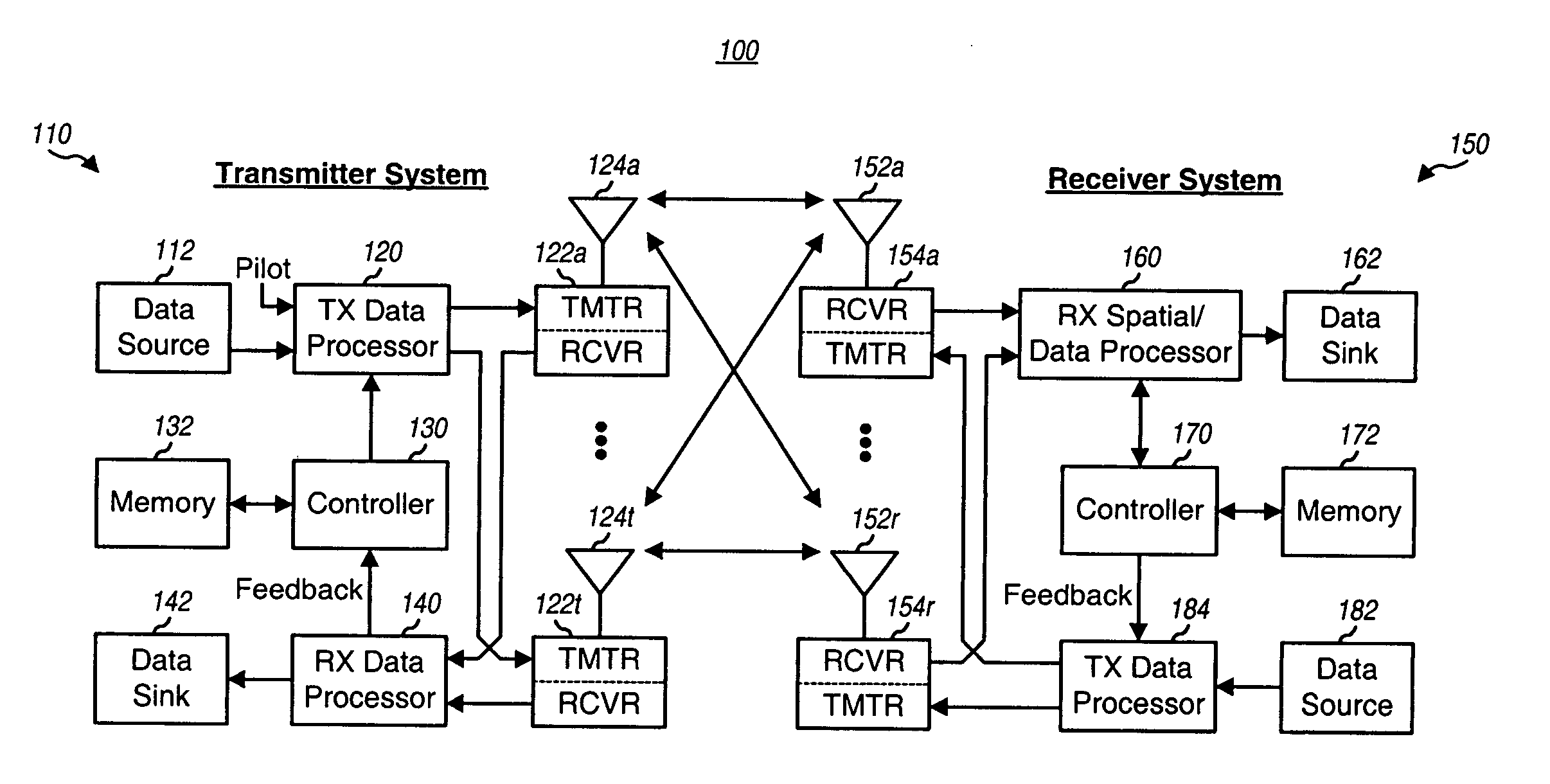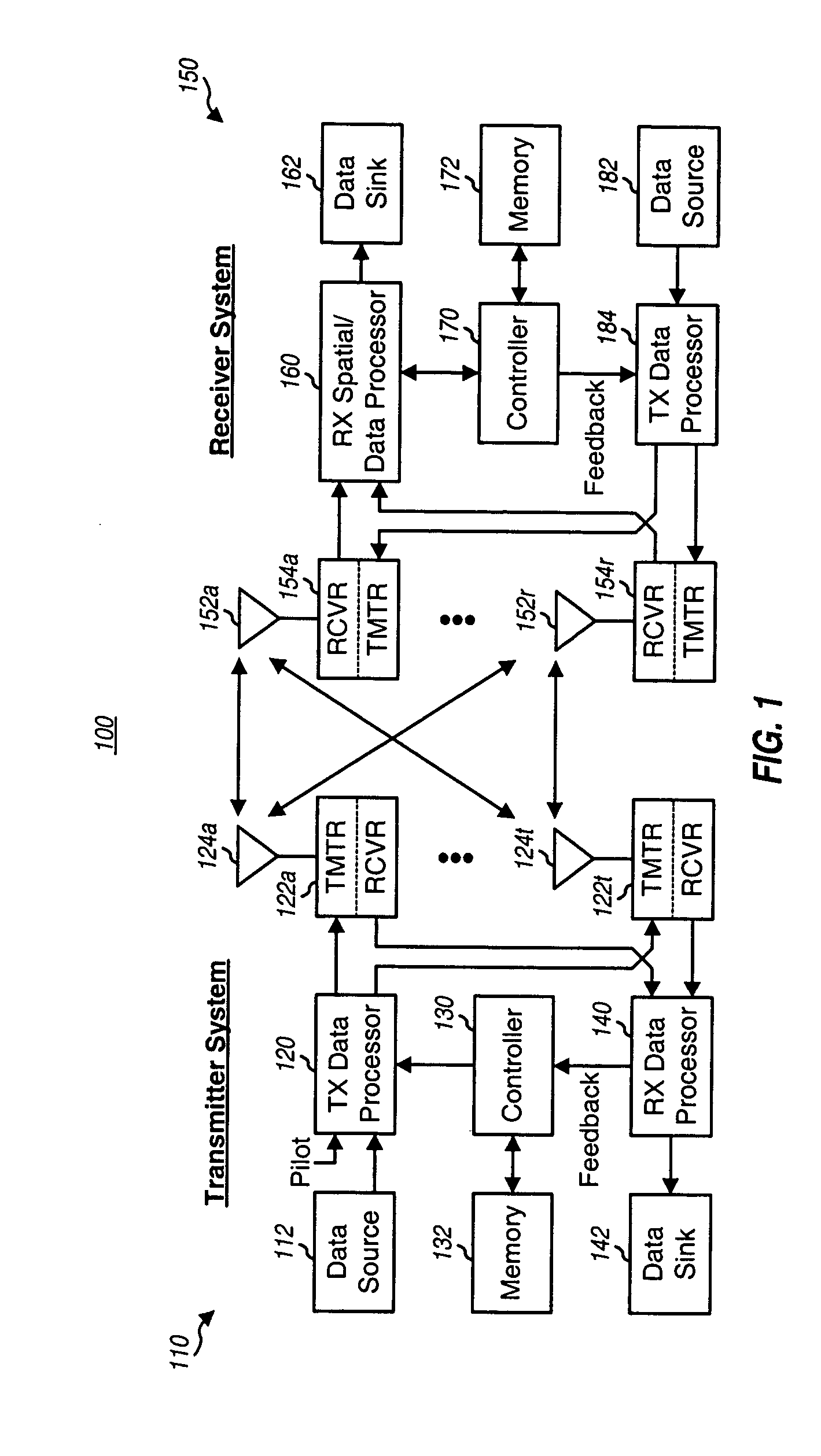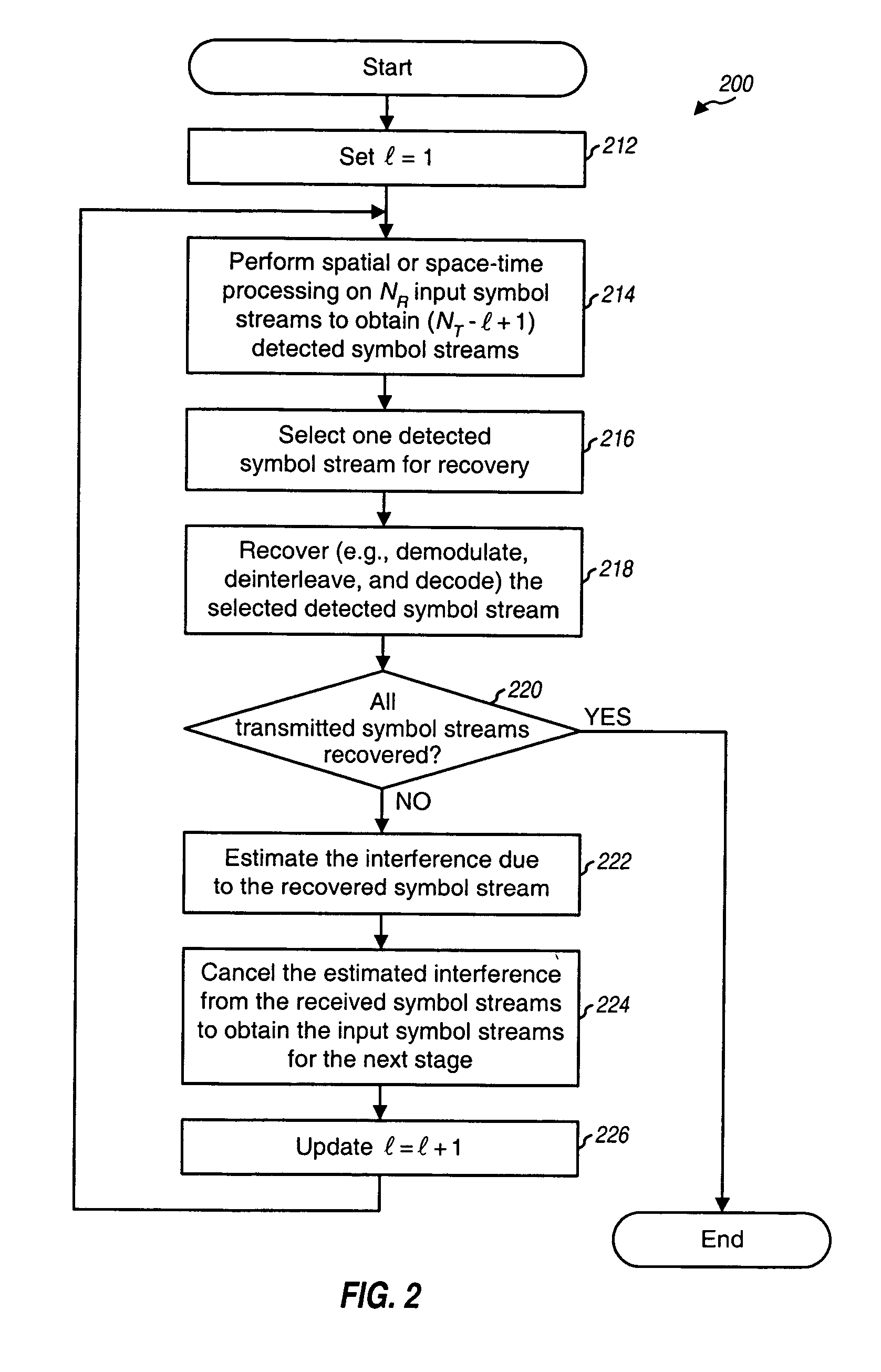Successive interference cancellation receiver processing with selection diversity
a receiver processing and interference cancellation technology, applied in the field of communication, can solve the problems of inability to support the lowest data rate of the mimo system, interference between the transmission symbol stream and the other stream at the receiver,
- Summary
- Abstract
- Description
- Claims
- Application Information
AI Technical Summary
Problems solved by technology
Method used
Image
Examples
Embodiment Construction
The word “exemplary” is used herein to mean “serving as an example, instance, or illustration.” Any embodiment or design described herein as “exemplary” is not necessarily to be construed as preferred or advantageous over other embodiments or designs.
The techniques described herein for supporting SIC receiver processing with selection diversity may be used in various communication systems, such as a MIMO system, a MIMO system that employs orthogonal frequency division multiplexing (i.e., a MIMO-OFDM system), and so on. For clarity, these techniques are described specifically for a MIMO system. For simplicity, the following description assumes that (1) one data stream is transmitted from each transmit antenna and (2) each data stream is independently processed at a transmitter and may be individually recovered at a receiver.
FIG. 1 shows a block diagram of a transmitter system 110 and a receiver system 150 in a MIMO system 100. Transmitter system 110 and receiver system 150 may ea...
PUM
 Login to View More
Login to View More Abstract
Description
Claims
Application Information
 Login to View More
Login to View More - R&D
- Intellectual Property
- Life Sciences
- Materials
- Tech Scout
- Unparalleled Data Quality
- Higher Quality Content
- 60% Fewer Hallucinations
Browse by: Latest US Patents, China's latest patents, Technical Efficacy Thesaurus, Application Domain, Technology Topic, Popular Technical Reports.
© 2025 PatSnap. All rights reserved.Legal|Privacy policy|Modern Slavery Act Transparency Statement|Sitemap|About US| Contact US: help@patsnap.com



